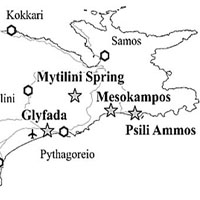Dragonfly assemblages in four Mediterranean wetlands of Samos Island, Greece (Odonata)
DOI:
https://doi.org/10.13133/2284-4880/470Abstract
Dragonflies (Odonata) are considered to be valuable indicators of hydroecosystems. This study reports the composition of the dragonfly assemblages in four wetlands of Samos Island, Greece, in a geographic area especially vulnerable to climate change where a trend towards a drier climate has been observed in the last decades. Dragonfly assemblages have not yet been studied on Samos. The analysis based on the number of different species and their autochthony revealed clear differences among the wetlands. The eutrophic Glyfada Lake, despite its variable hydrology resulting from drought – the seasonal decrease in water availability – harboured the largest diversity of dragonflies, larger than the oligotrophic Mesokampos Lake. The assemblage of the spring and rivulet at Mytilini, although also influenced by drought, had its own set of species of high autochthony. The seasonal brackish lake and marsh of Psili Ammos had the lowest number of species and was dominated by one very abundant breeding species. Drought was the main factor affecting the number and composition of species. The collected data create a reference for the future monitoring of trends in the composition of odonatofauna under the changing climate of Samos Island.
Downloads





